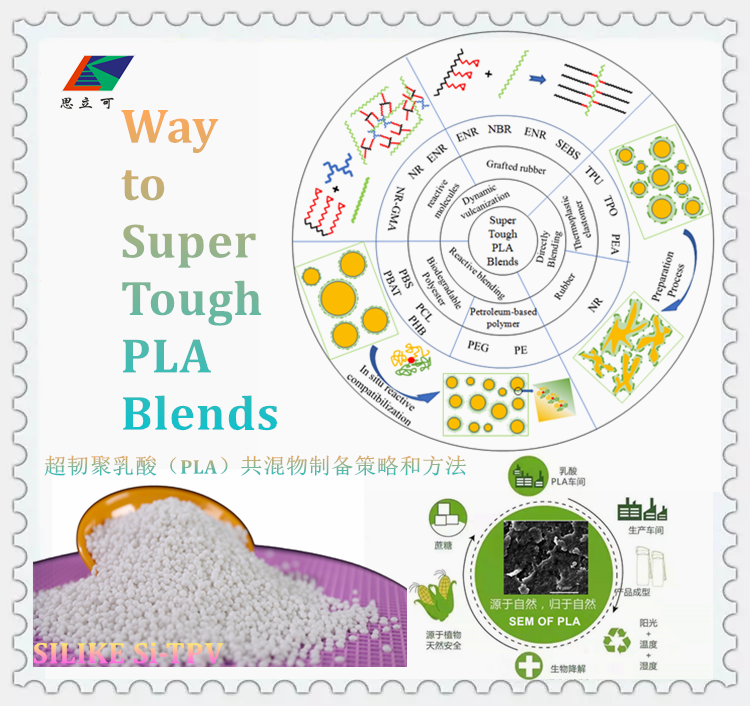The use of synthetic plastics derived from petroleum is challenged due to extremely well-known issues of white pollution. Seeking renewable carbon resources as an alternative has become very important and urgent. Polylactic acid (PLA) has been widely considered a potential alternative to replace conventional petroleum-based materials. As a renewable resource derived from biomass with appropriate mechanical properties, good biocompatibility, and degradability, PLA has experienced explosive market growth in engineering plastics, biomedical materials, textile, industrial packaging applications. However, its low heat resistance and low toughness severely limit its range of applications.
The melt blending of polylactic acid (PLA) and thermoplastic silicone polyurethane (TPSiU) elastomer was performed to toughen PLA.
The results showed that TPSiU was effectively blended into PLA, but no chemical reaction occurred. The addition of TPSiU had no obvious effect on the glass transition temperature and melting temperature of PLA, but slightly reduced the crystallinity of PLA.
The morphology and dynamic mechanical analysis results demonstrated the poor thermodynamic compatibility between PLA and TPSiU.
Rheological behavior studies showed that PLA/TPSiU melt was typically pseudoplastic fluid. As the content of TPSiU increased, the apparent viscosity of PLA/TPSiU blends showed a trend of rising first and then falling. The addition of TPSiU had a significant effect on the mechanical properties of PLA/TPSiU blends. When the content of TPSiU was 15 wt%, the elongation at break of the PLA/TPSiU blend reached 22.3% (5.0 times that of pure PLA), and the impact strength reached 19.3 kJ/m2 (4.9 times that of pure PLA), suggesting the favorable toughening effect.
Compared with TPU, TPSiU has a better toughening effect on PLA on the one hand and better heat resistance on the other hand.
However, SILIKE SI-TPV is a patented dynamic vulcanized thermoplastic Silicone-based elastomers. It has drawn much concern due to its surface with Unique silky and skin-friendly touch, excellent dirt collection resistance ,better scratch resistance, not contain plasticizer and softening oil, no bleeding / sticky risk, no odors.
As well as, better toughening effect on PLA.
This unique safe and environment-friendly material, provides a good combination of properties and benefits from thermoplastics and fully cross-linked silicone rubber. suits for wearable surface, engineering plastics, biomedical materials, textile, industrial packaging applications.
Above information, excerpted from Polymers (Basel). 2021 Jun; 13(12): 1953., Toughening Modification of Polylactic Acid by Thermoplastic Silicone Polyurethane Elastomer. and, Super Tough Poly(Lactic Acid) Blends A Comprehensive Review”(RSC Adv., 2020,10,13316-13368)
Post time: Jul-08-2021






